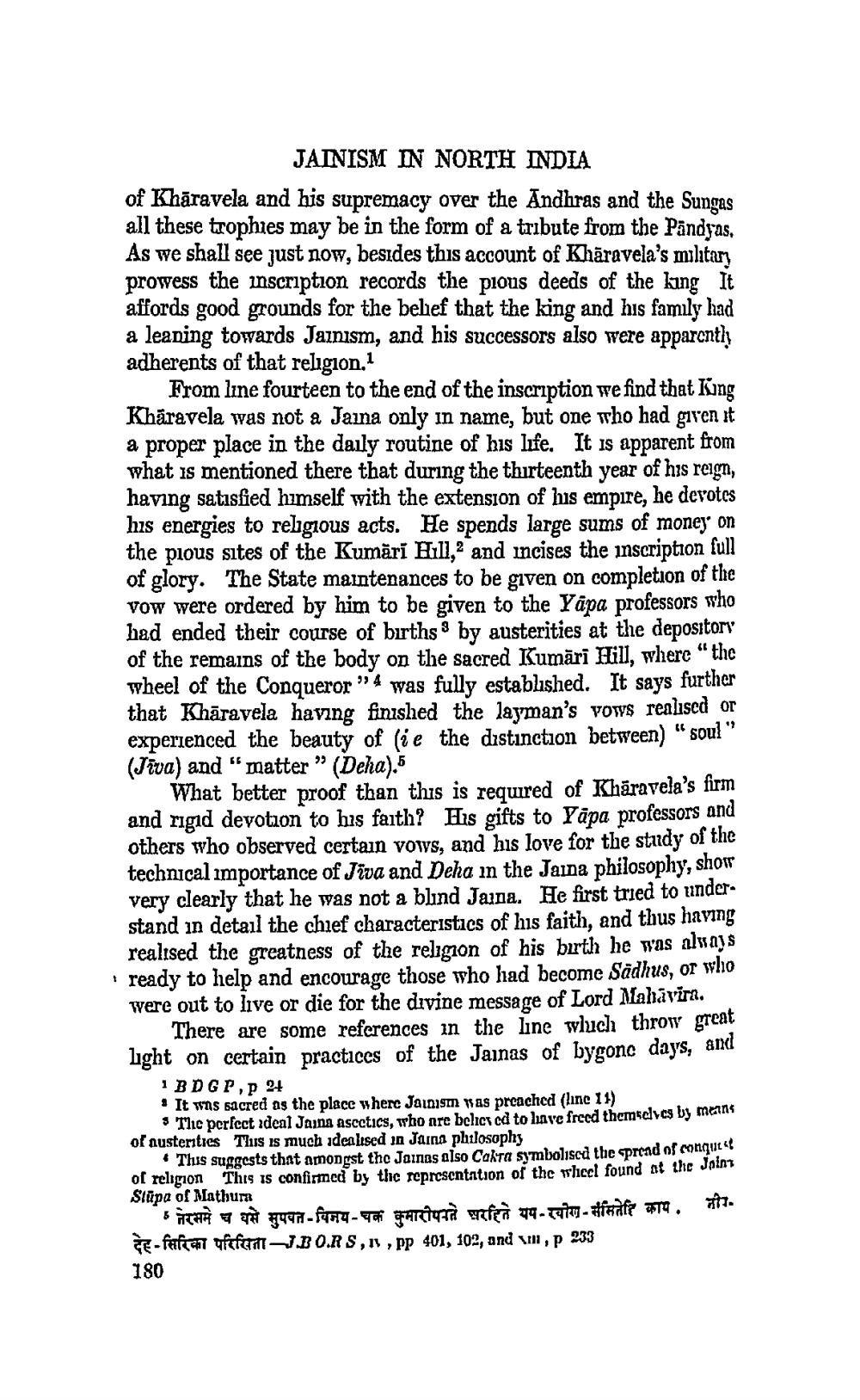________________ JAINISM IN NORTH INDIA of Kharavela and his supremacy over the Andhras and the Sungas all these trophies may be in the form of a tribute from the Pandyas, As we shall see just now, besides this account of Kharavela's miltary prowess the inscription records the pious deeds of the king It affords good grounds for the belief that the king and his family had a leaning towards Jainism, and his successors also were apparently adherents of that religion, From line fourteen to the end of the inscription we find that King Kharavela was not a Jaina only in name, but one who had given at a proper place in the daily routine of his life. It is apparent from what is mentioned there that during the thirteenth year of his reign, having satisfied himself with the extension of his empire, he devotes his energies to rehgious acts. He spends large sums of money on the pious sites of the Kumari Hull, and incises the inscription full of glory. The State maintenances to be given on completion of the Vow were ordered by him to be given to the Yapa professors who had ended their course of births by austerities at the depository of the remains of the body on the sacred Kumari Hill, where "the wheel of the Conqueror "4 was fully established. It says further that Kharavela having finished the layman's vows realised or experienced the beauty of (ie the distinction between) "soul (Jiva) and "matter" (Deha). What better proof than this is required of Kharavela's firm and rigid devotion to his faith? His gifts to Yapa professors and others who observed certain vots, and his love for the study of the technical importance of Jiva and Deha in the Jaina philosophy, show very clearly that he was not a blind Jaina. He first tried to understand in detail the chief characteristics of his faith, and thus having realised the greatness of the religion of his birth he was always ready to help and encourage those who had become Sadhus, or Who were out to live or die for the divine message of Lord Mahavira. There are some references in the line wluch throw great light on certain practices of the Jainas of bygone days, and IBDGP, 24 * It was sacred as the place where Jainism as preached (line 11) * The perfect ideal Jagna ascetics, who are believed to have freed themselves by means of nusterities This is much idealised in Jana philosophy * Thss suggests that amongst the Jainas Iso Cakra symbolised the prend of congue of religion This is confirmed by the representation of the weet found at the Jam Stupa of Mathum रममे च पसे मुपपत-बिमय-चक कुमारीपते परहिते यय-रयोग समिति काप, हारCE-fafica of forme BO.RS,!), pp 401, 102, and m, p 233 180




